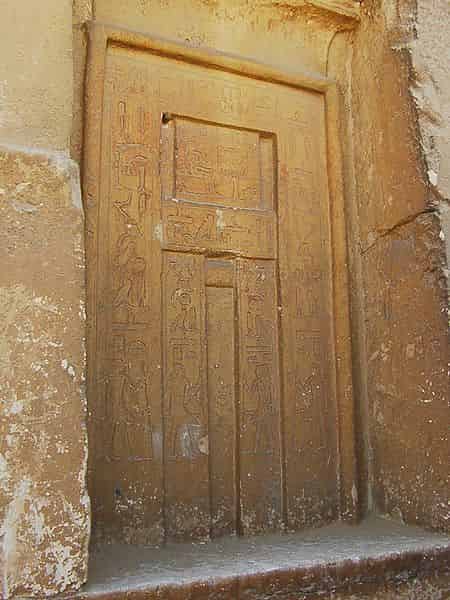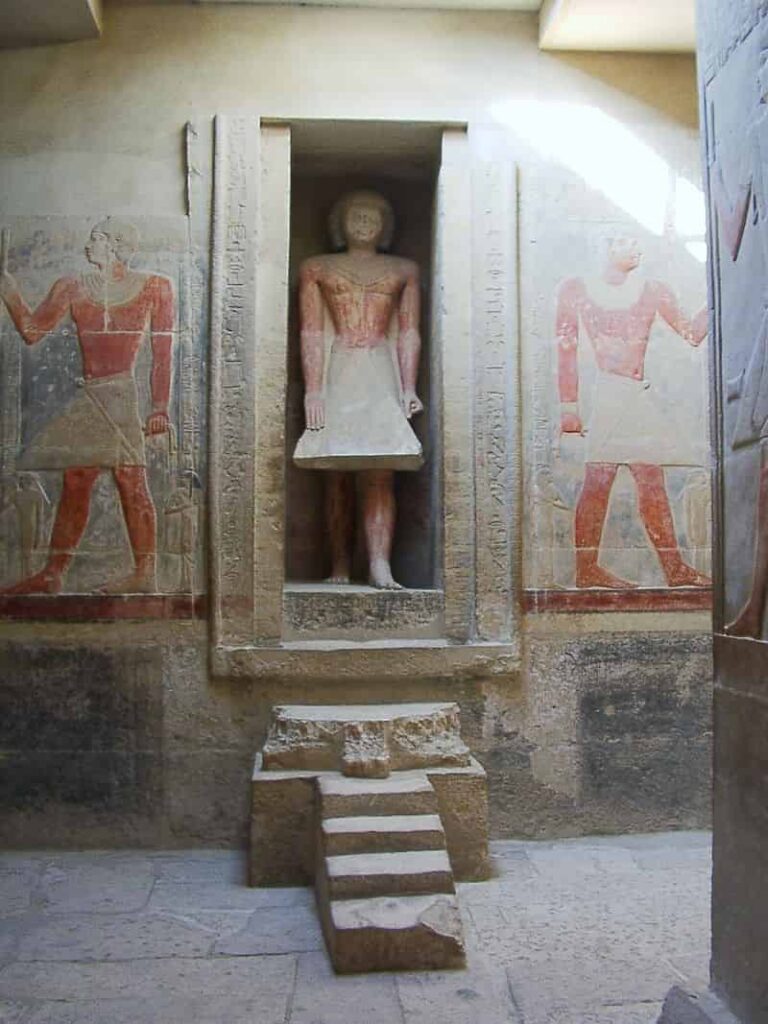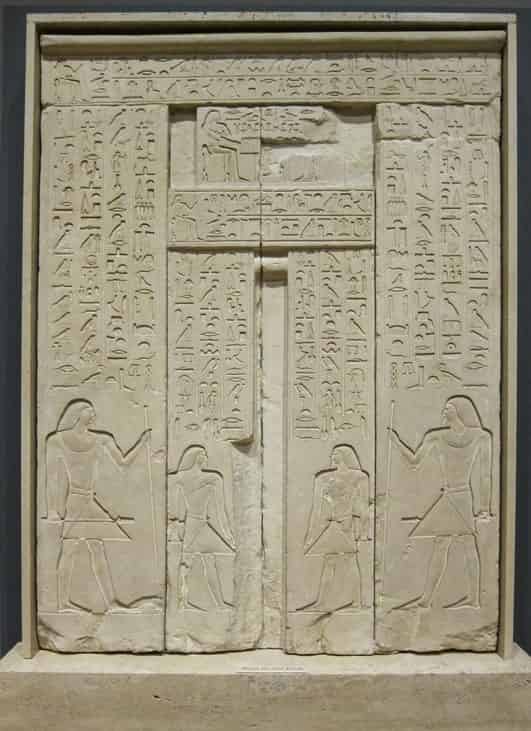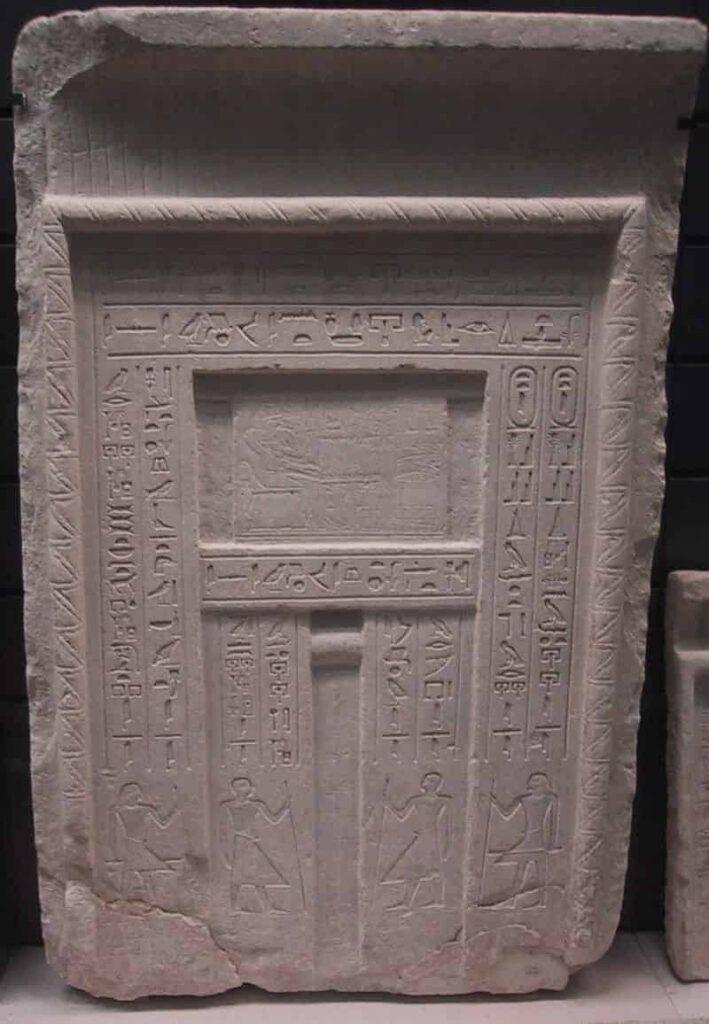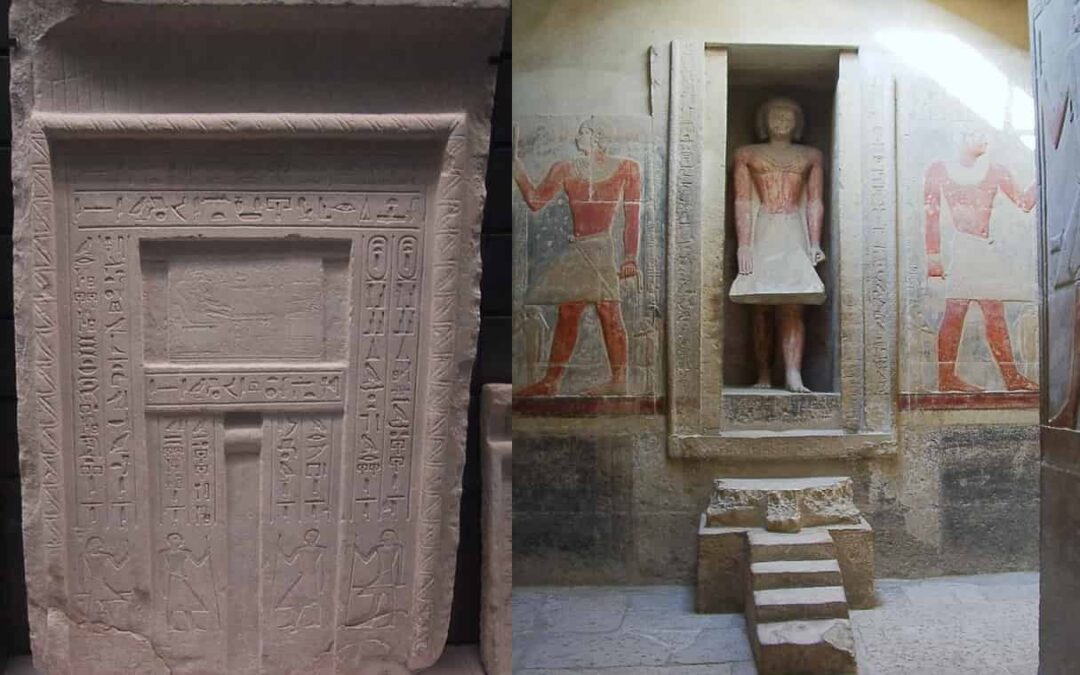A “false door” is, as its name suggests, an imitation of a door typically found in ancient Egyptian mortuary temples and tombs. These doors serve as a conduit between the world of the living and the world of the dead.
Deities or the deceased could interact with the world of the living by passing through these gates or could receive offerings through them.
The ‘false door’ is one of the most common features in ancient Egyptian tombs and is an architectural innovation discovered in both royal and non-royal tombs from the early Old Kingdom.
The use of the ‘false door’ originated in the Mastabas during the 3rd dynasty of the Old Kingdom and became a prevalent element in tombs of subsequent dynasties, particularly the 4th and 6th dynasties.
During the 150-year reign of the Sixth Dynasty under the pharaohs Pepi I, Merenre, and Pepi II, the ‘false door’ underwent modifications, enabling historians to date tombs based on the style of these door imitations.
After the First Intermediate Period, the popularity of the ‘false door’ declined, giving way to a stela as the primary element for funerary inscriptions.
The ‘false door’ was not a replication of an actual door but rather a combination of a niche and a stela with hieroglyphic inscriptions. They were typically placed to the west of the main room of the chapel, known as the offering room.
A door was usually positioned in front of the gate where food and drink were offered for the deceased. The offerings to the dead could be actual food or a stela with carved representations of food in a symbolic manner.
Tables were typically constructed of stone and adorned with drawings of offerings such as bread, beer, and oxen, among others. They were decorated and marked with the names and titles of the tomb owner.
For the ancient Egyptians, these gates were perceived as connections to the underworld and played a significant role in the culture of death.
The ‘false door’ stands out as one of the most aesthetically pleasing elements of tombs, with many having endured in their original essence and location, although others have been relocated to various museums.
